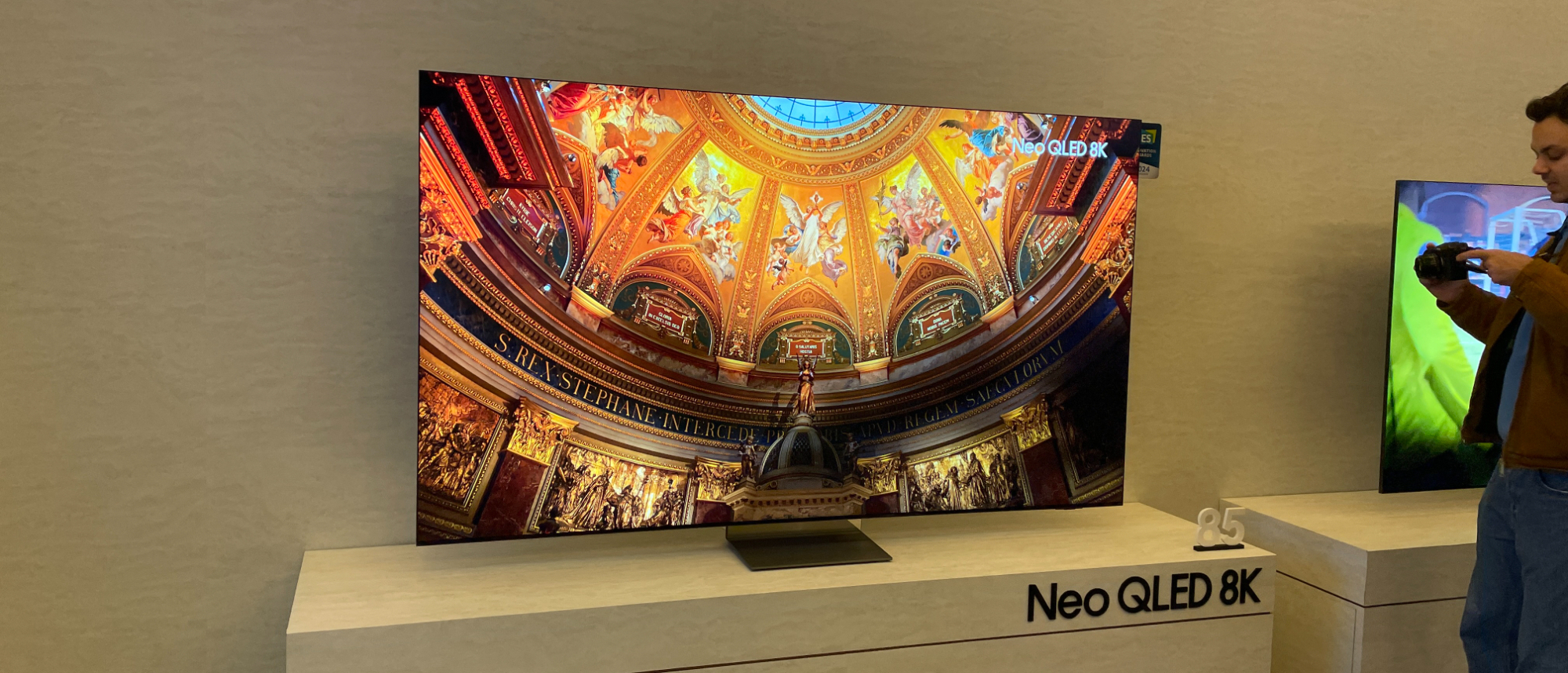
Just how smart can a TV get? Well, if you believe what several major brands are saying at CES 2024, flatscreen IQs are set to go up a level this year thanks to – yep, you guessed it – AI processing.
Nobody has made this message clearer than Samsung, who unveiled the QN900D, its new flagship 8K Neo QLED, as part of its 2024 TV lineup. The top-tier TV uses a new processing chip designed to deliver a wide range of AI enhancements to take “ picture and sound quality to a whole new level”.
We headed over to the company’s exhibition space to see all this new processing in action for ourselves. Read on for our first impressions (not powered by AI).
Design
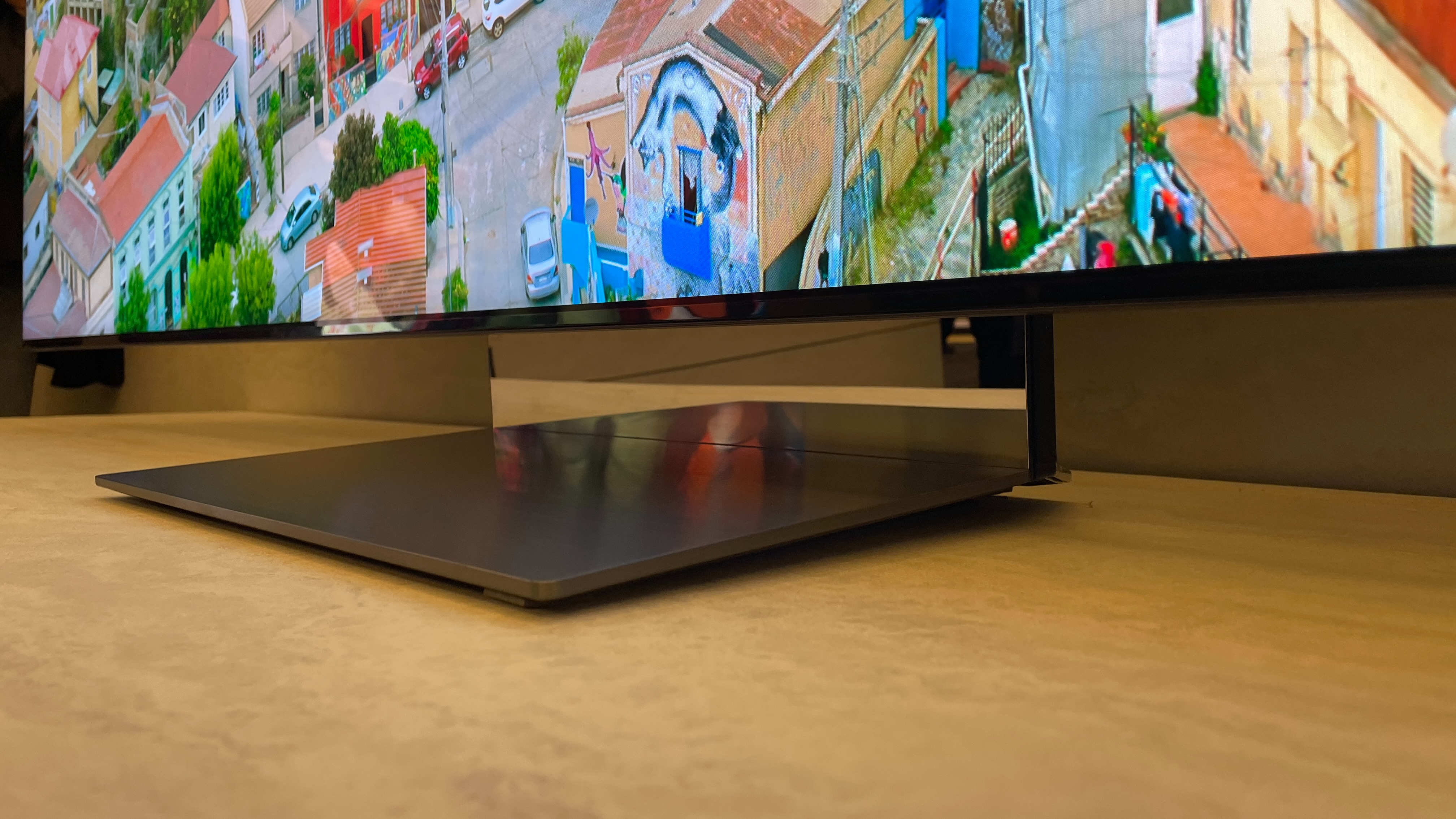
While the emphasis was mainly on the capabilities of the QN900D’s brand-new processor, there are a couple of key design highlights worth mentioning about Samsung’s flagship 8K TV. Firstly, the new model showcases what Samsung calls its Infinity Air Design. The QN900D sits on top of a stand which has been designed with a mirror effect to make it appear as if the TV is floating. The stand is also smaller than in previous years to make it easier to put the TV up against a wall.
It’s a relatively compact design too. Samsung claims the 65-inch version is the world’s thinnest 8K TV screen, with a depth of 12.9mm. Speaking of sizes, the QN900D is available in 65, 75 and 85 inches, with a new 98-inch model also in the pipeline. Our time was predominantly spent with the 75- and 85-inch sets at the show.
Features
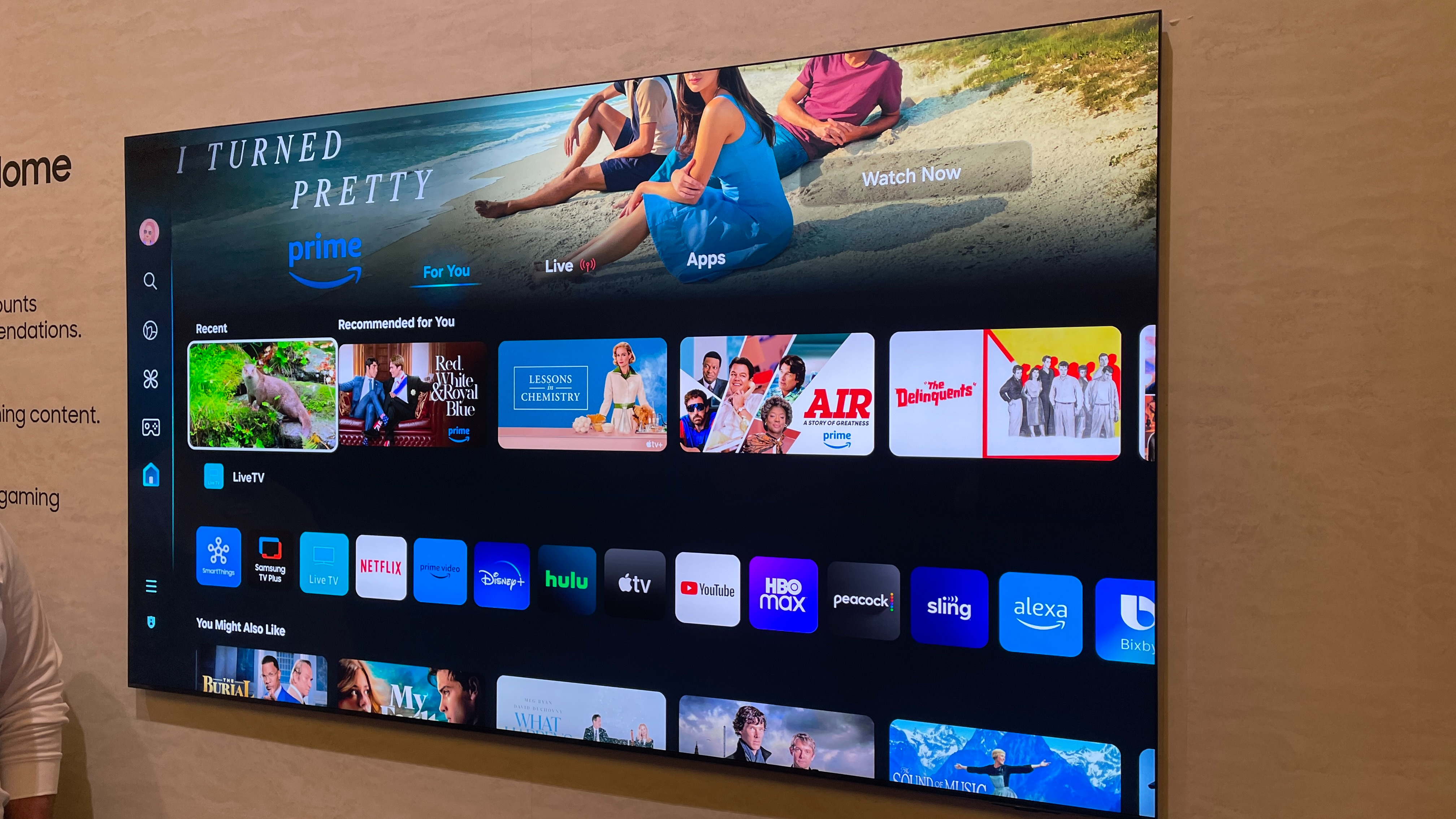
The engine powering the QN900D is called the NQ8 AI Gen 3 processor, which Samsung claims is the most powerful video resolution processor ever designed for a TV. The headline specs here are that it boasts a Neural Processing Unit (NPU) twice as fast as that found on last year’s 8K model and with eight times more neural networks on hand to help with all the heavy lifting.
The TV offers a range of features designed to improve picture quality, such as ‘8K AI Upscaling Pro', which pretty much does what it says on the tin: upscale content to 8K... like a pro. Indeed, given the dearth of consumer-friendly 8K material out there, Samsung realises the 8K TV has to be up to the job of bringing lower-quality content up to its screen's resolution.
But it isn't just the TV’s 8K upscaling getting a major boost in 2024. We’re particularly intrigued by ‘AI Motion Enhancer Pro’, which aims to combat common motion-processing issues that can occur when watching sports, especially via online streaming services.
Samsung claims the processor is powerful enough to automatically detect the type of sport being played, and can use 'deep learning' to apply the proper ball detection model so that it tracks movement more accurately and improves the ball’s stability in flight.
Switch over to audio features and AI comes into the equation once again with 'Active Voice Amplifier Pro'. This is a proprietary dialogue booster which uses AI and deep-learning technology to enhance dialogue and voices by separating voice mixes from the rest of the audio, so you should be able to follow the dialogue at any volume.
The QN900D also supports Q-Symphony, allowing you to connect multiple wireless speakers and a soundbar to the TV to create a seamless surround sound set-up.
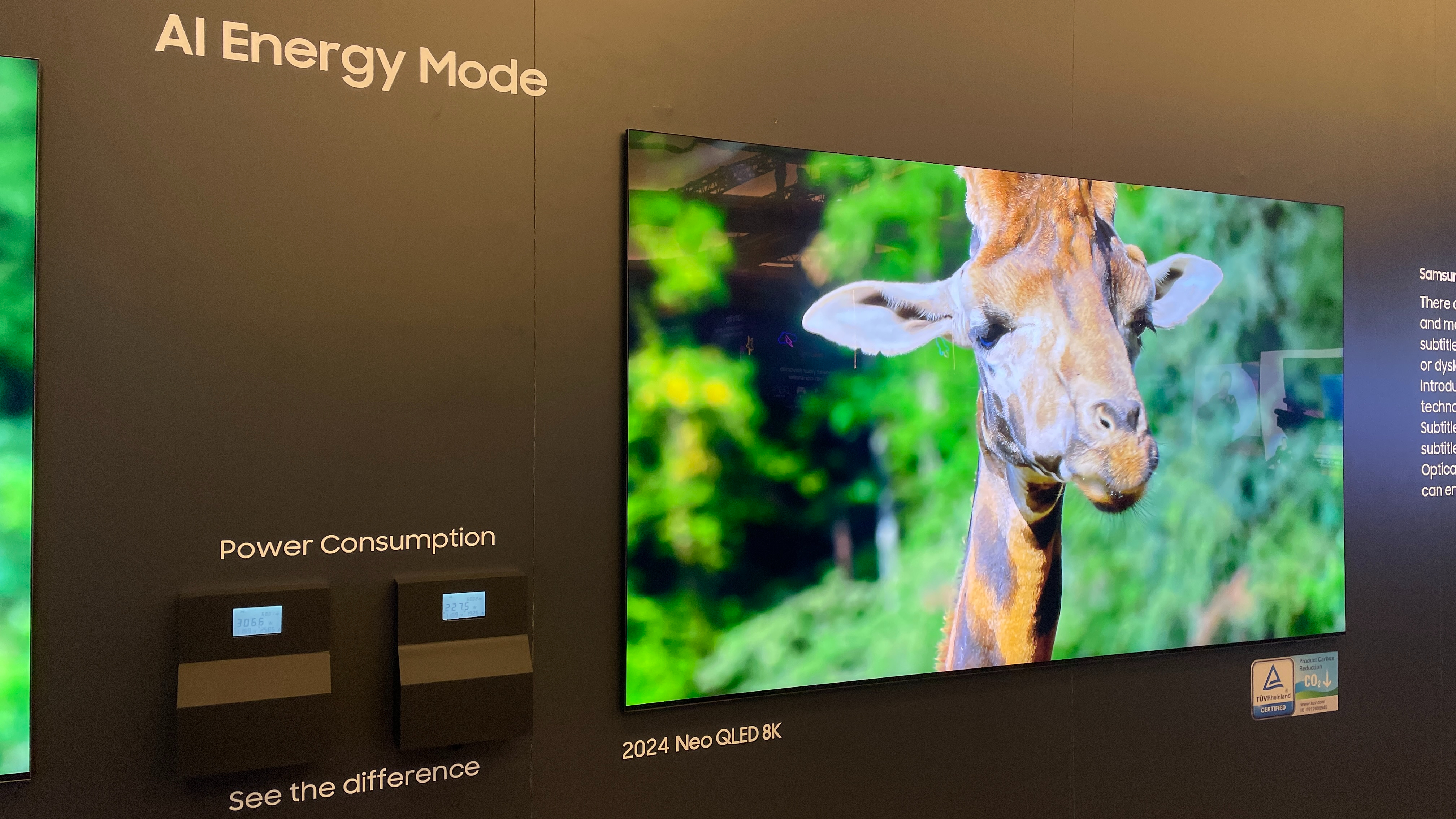
We had expected the QN900D’s picture and sound quality to get an AI boost, but more surprising is that energy consumption does too. We saw a neat demo of the 'AI Energy Mode' in action, showing the real-time power consumption of the new model versus last year’s model. The demo clip playing displayed a mix of bright and dark content and you could see power meters monitoring the usage on both sets. While the clip played, the differences fluctuated between 70 and 90 watts depending on the type of content on the screen.
Last but not least, Samsung’s Tizen OS gets a tweak for 2024 too, with the introduction of Samsung TV Plus. This delivers a new home screen and an updated user interface which brings in content from different sources and services and presents it so users can access their favourite content more easily.
Picture
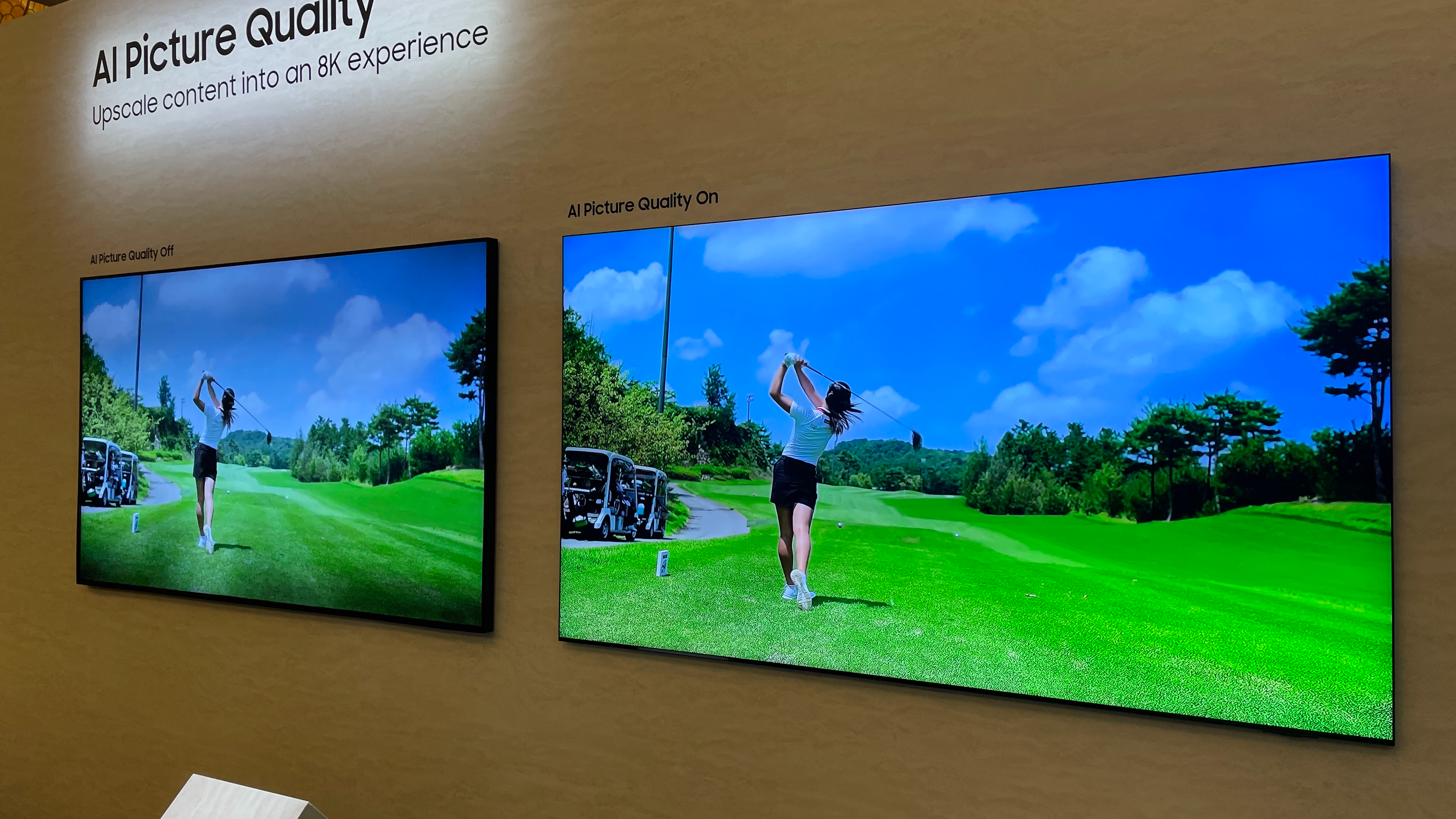
On the showfloor were several demo clips to take a look at, with a couple specifically designed to highlight the advantages of the new picture-processing technology.
The first was a bright, punchy clip of a golfer hitting a shot from behind with the camera angle shifting to focus from her onto the flight of the actual golf ball. Samsung was comparing it side by side with the previous year’s 8K model to show the effect of the new motion enhancer, and you could see that the tracking of the ball on the new set was indeed more stable and the round shape of the ball was sharper and better defined all-round. It’s a tough test due to the ball’s small size, and the old set definitely struggled in comparison to the new one, the ball flickering on screen as it flew through the air onto the green.
The second demo switched to showing the benefits of the upscaler. It was on the same two TVs as the previous clip, allowing you to see the difference between content being upscaled on the newer model compared to the 2023 set. There wasn’t much motion on display here, but you could still see that the image on the newer screen looked a little clearer and better defined, with a higher level of detail most notably in the background.
We had another chance to see the upscaling in action at another demo in a separate meeting. Once again, two TVs sat side by side, this time being fed 720P and 1080P content that was more recognisable, such as the Netlfix adaptation of Lemony Snicket’s A Series of Unfortunate Events. Here, the jump in clarity and detail over the ‘conventional’ 8K TV were pretty impressive, with textures of clothing appearing more realistic, and greater sharpness and precision in the background making it easier to see fine details.
Sound
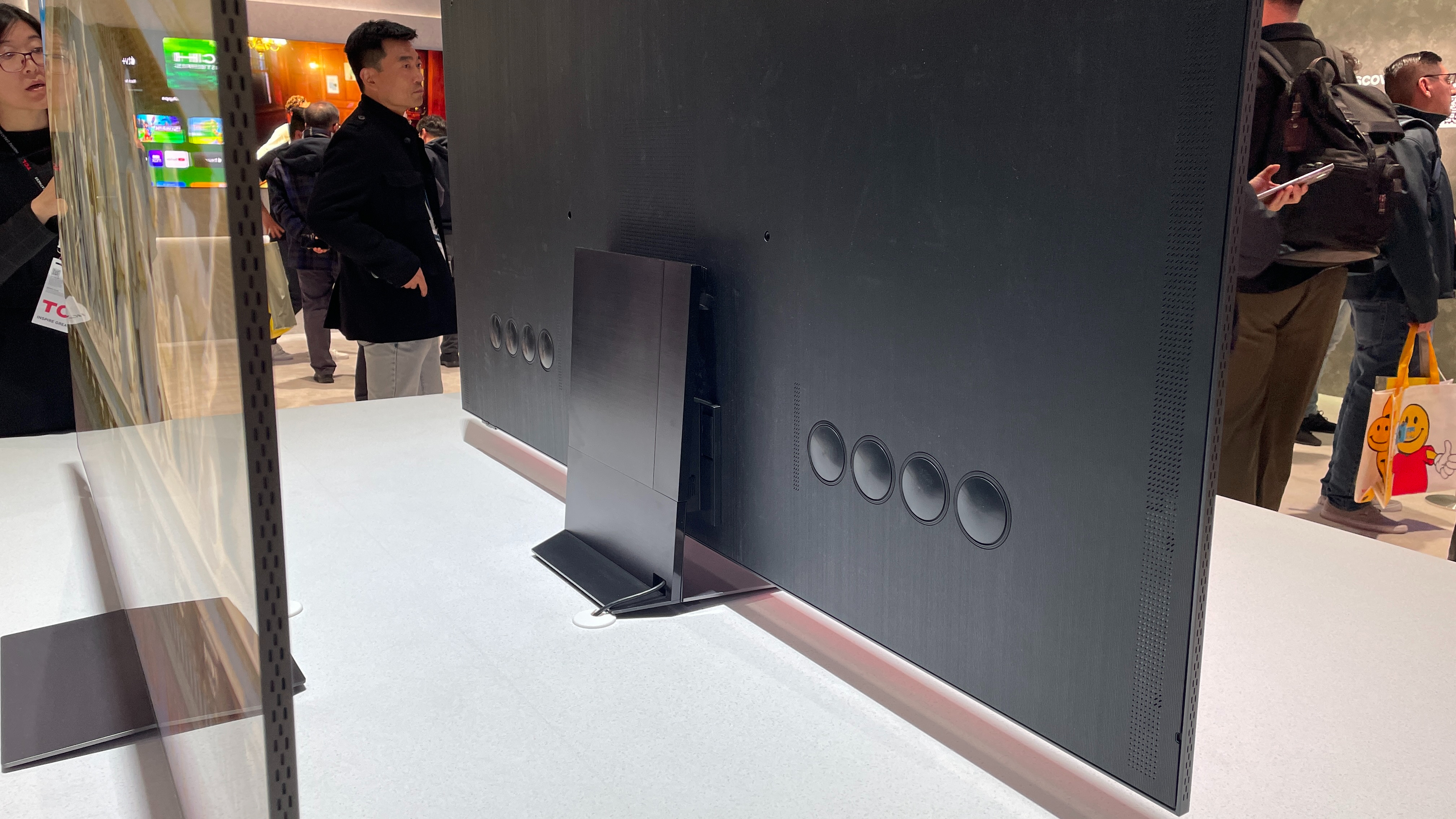
The one area of performance where it wasn’t possible to form an initial impression was audio – not that you’d have been able to make any solid judgements given the amount of hustle and bustle at the first look event anyway. That's something we'll have to wait patiently for, until we get a QN900D review sample in our own test rooms.
Early verdict
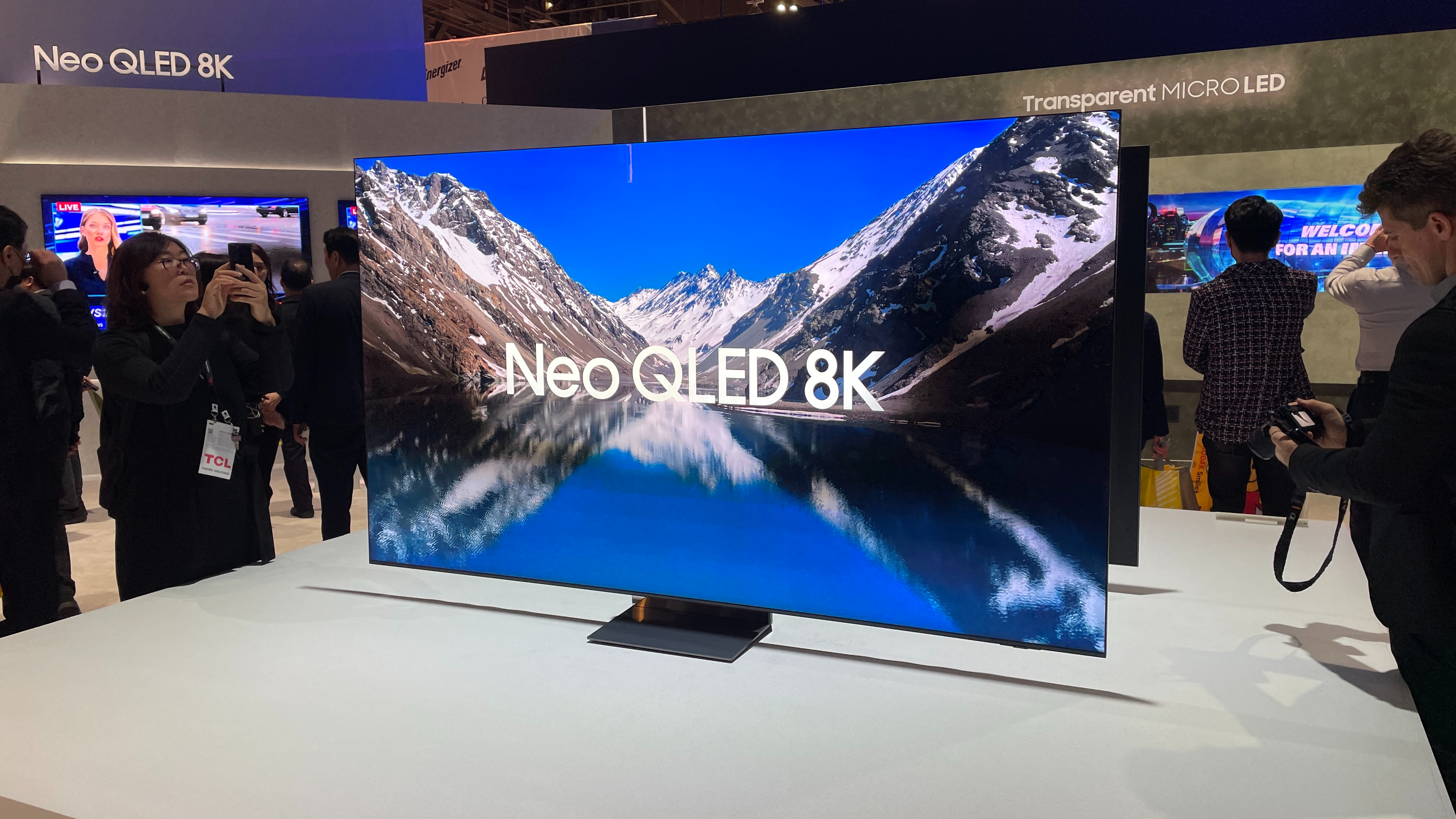
Now, not everyone is going to be looking at upgrading to an 8K TV in 2024, especially given the lack of content available and the long line of new and more affordable 4K models heading our way in the coming months, including Samsung’s own S95D QD-OLED.
But after spending some time with the QN900D, we’re intrigued to see just how this set performs in our test rooms compared to the top 4K performers. Does it perform better with 4K content? Is its performance worth paying extra for? Motion handling, for example, hasn’t always been Samsung’s biggest strength, but seeing the demo of it being handled so deftly on the 8K screen was impressive.
We can’t wait to try it out in the coming months.
MORE:
Check out all of the news and highlights from CES 2024
CES 2024: Samsung Premiere 8K is the world's first wireless projector
These are the best TVs you can buy right now







